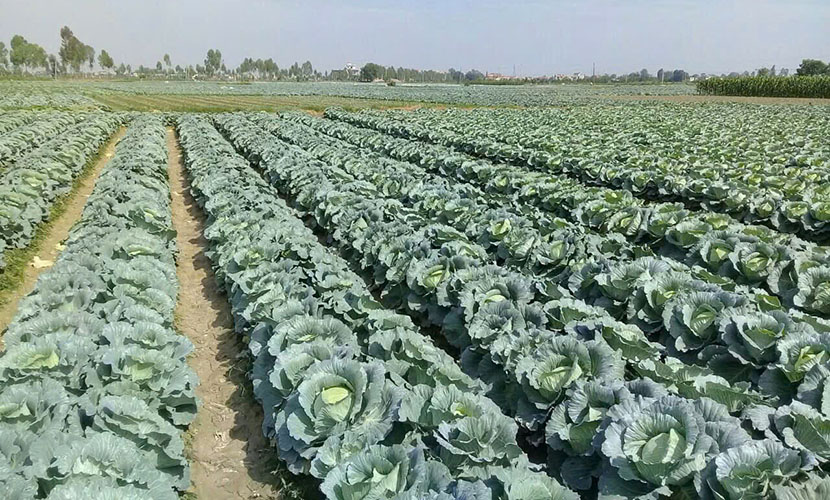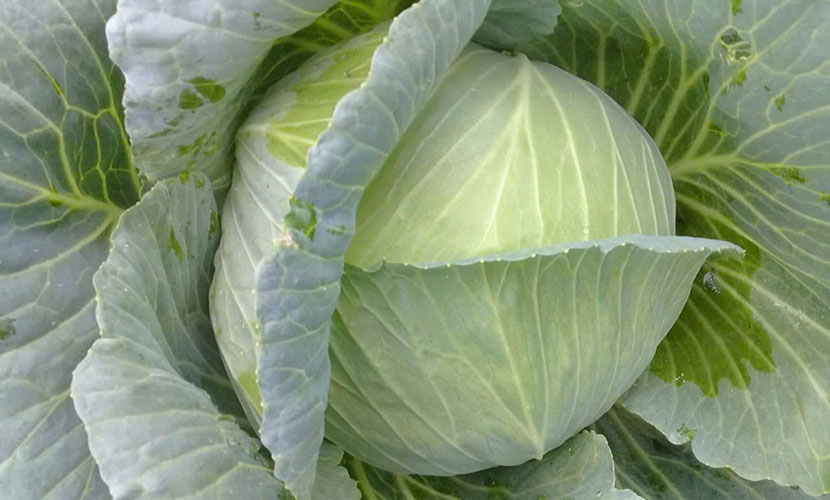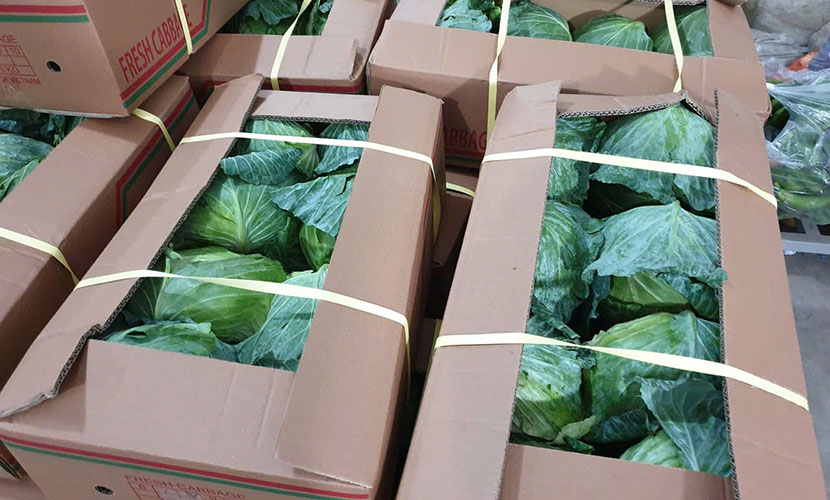
With an area of 4 hectares, each season the Lien Hiep Safe Agricultural Cooperative supplies about 120 tons of Globalgap cabbage to the market. A partnered company will purchase the entire output, then process and export to Japan.
Mr. Hiep, Director of the Lien Hiep Cooperative, shared that all production processes strictly follow Globalgap standards. Specifically, they are the highest current standard for clean agricultural production.

Globalgap cabbage farm
According to Mr. Hiep, when first launching the Globalgap cabbage model, the initial and most crucial stage is seedling propagation. Farmers germinate seeds in a net house to ensure technical requirements and to avoid external weather impacts. The germination period lasts about half a month.
Next is the soil improvement stage. Farmers deeply plow the soil and leave fallow for 15–20 days. Then, they thoroughly clean all grass and debris on the surface. Each bed is 30 cm high and 70 cm wide. On average, one hectare accommodates 3,500 cabbage plants.
Once these steps are complete, the cooperative proceeds to transplant the seedlings, apply organic fertilizer, and cover the beds with plastic mulch. This method helps limit weed growth, retain soil moisture, and especially prevents bed erosion during heavy rain.
Talking about fertilizer sources, Mr. Hiep revealed that prior to the planting season, the cooperative actively prepares organic compost. The compost mixture consists of fermentation yeast and chicken manure, and is composted for 6 consecutive months until fully decomposed.
According to him, using organic fertilizer improves soil structure, keeps it loose, promotes rapid plant growth, and reduces pests. In addition to organic fertilizer, the cooperative also applies small amounts of NPK and phosphate fertilizers when the plants are about one month old, to stimulate development.

Globalgap cabbagee from Vietnam
“The cooperative is growing Sakata No.70 cabbage variety following Globalgap procedures. Before planting, we sent soil and water samples for quality testing, both met the required standards,” Mr. Hiep added.
Thanks to strictly following the production process as required by the purchasing partner, the Lien Hiep Cooperative operates smoothly. With 4 hectares of land, farmers plant cabbage in blocks (1.3 hectares per block), and the cooperative only needs five workers to manage the entire workload.
While showing us around the lush and expansive cabbage fields, Mr. Hiep explained: “Growing cabbage is not difficult, but it must follow the proper process with all synchronized steps. Cutting corners will lead to risks.”
Pointing at the cabbage rows, Mr. Hiep said the spacing between plants is 40 cm, and between rows is 60 cm, allowing for good air circulation and plant development. Additionally, the entire irrigation system is automatical. Just opening the main valve lets water flow through the pipes to the plants.
Mr. Hiep shared a tip: to keep cabbages green, healthy, and pest-free, choose straight seedlings with well-developed roots. This helps the plants grow quickly and resist pests. Most importantly, plant protection chemicals must be sprayed periodically, in correct doses and according to regulations.

Globalgap cabbage boxes
“The Globalgap cabbage grows for about 105 days before harvest. Each head weighs between 1.5 and 1.8 kg to meet the standard. According to the plan, the cooperative will supply 120 tons of clean, safe cabbage per season. All products are purchased at 5,000 VND/kg by a vegetable company in Vietnam and exported to Japan,” Mr. Hiep said.
Commenting on the clean cabbage model of the Lien Hiep Cooperative, Ms. Nham, an officer from the Ha Nam Agricultural Extension Center, said the model strictly follows the production process, producing safe products that ensure consumer health.
At the beginning of each field, the cooperative keeps a logbook detailing the cabbage variety, seedling date, transplanting date, and expected harvest time. Water sources and soil samples are all tested before the planting season begins.
https://nongnghiepmoitruong.vn/bap-cai-xuat-ngoai-d255072.html
